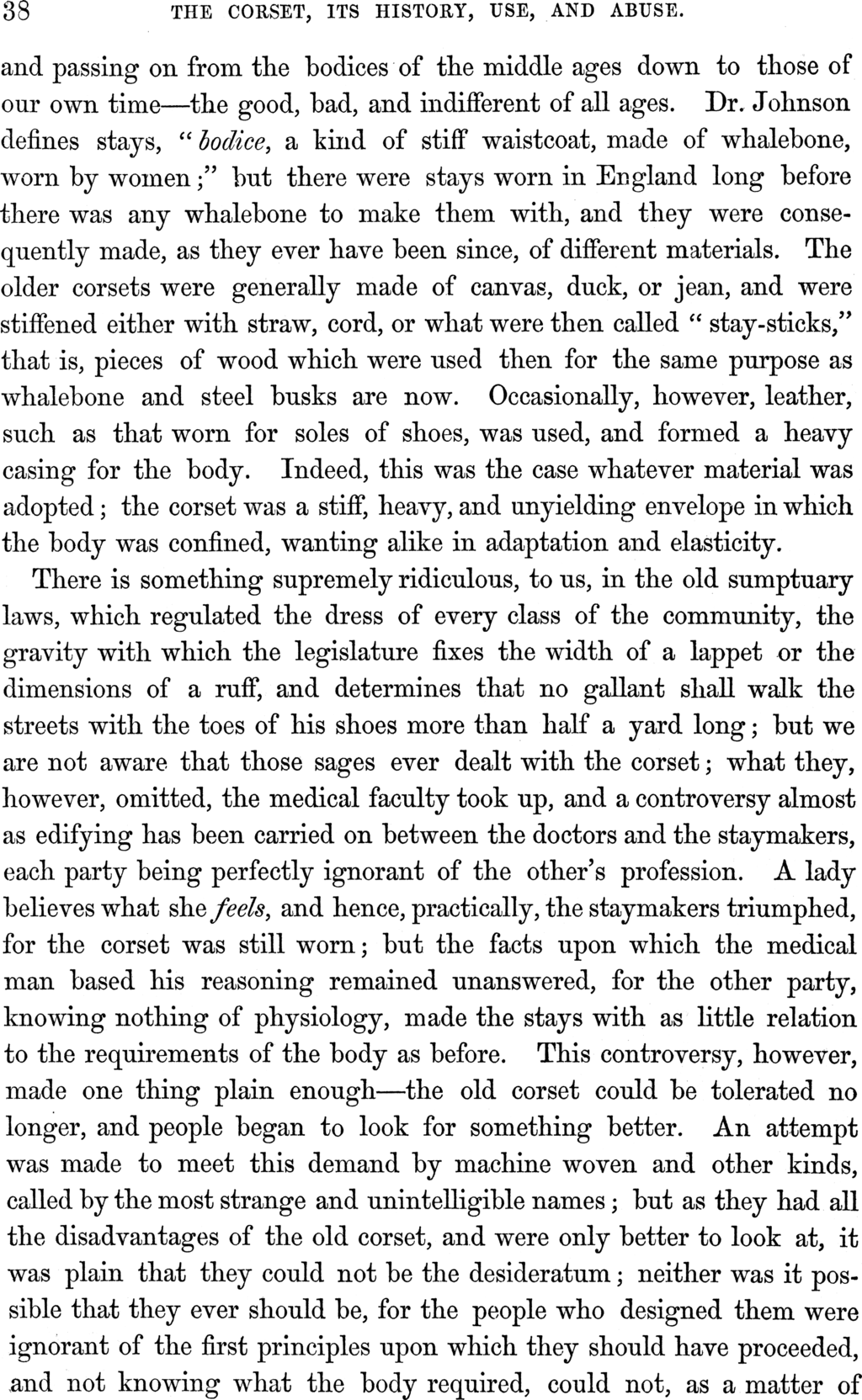and passing on from the bodices of the middle ages down to those of our own time—the good, bad, and indifferent of all ages. Dr. Johnson defines stays, "bodice, a kind of stiff waistcoat, made of whalebone, worn by women;" but there were stays worn in England long before there was any whalebone to make them with, and they were consequently made, as they ever have been since, of different materials. The older corsets were generally made of canvas, duck, or jean, and were stiffened either with straw, cord, or what were then called "stay-sticks," that is, pieces of wood which were used then for the same purpose as whalebone and steel busks are now. Occasionally, however, leather, such as that worn for soles of shoes, was used, and formed a heavy casing for the body. Indeed, this was the case whatever material was adopted; the corset was a stiff, heavy, and unyielding envelope in which the body was confined, wanting alike in adaptation and elasticity.
There is something supremely ridiculous, to us, in the old sumptuary laws, which regulated the dress of every class of the community, the gravity with which the legislature fixes the width of a lappet or the dimensions of a ruff, and determines that no gallant shall walk the streets with the toes of his shoes more than half a yard long; but we are not aware that those sages ever dealt with the corset; what they, however, omitted, the medical faculty took up, and a controversy almost as edifying has been carried on between the doctors and the staymakers, each party being perfectly ignorant of the other's profession. A lady believes what she feels, and hence, practically, the staymakers triumphed, for the corset was still worn; but the facts upon which the medical man based his reasoning remained unanswered, for the other party, knowing nothing of physiology, made the stays with as little relation to the requirements of the body as before. This controversy, however, made one thing plain enough—the old corset could be tolerated no longer, and people began to look for something better. An attempt was made to meet this demand by machine woven and other kinds, called by the most strange and unintelligible names; but as they had all the disadvantages of the old corset, and were only better to look at, it was plain that they could not be the desideratum; neither was it possible that they ever should be, for the people who designed them were ignorant of the first principles upon which they should have proceeded, and not knowing what the body required, could not, as a matter of
